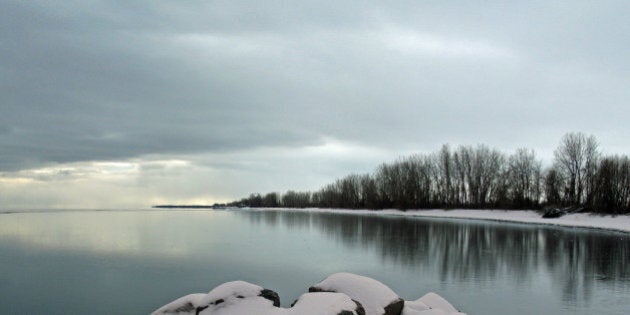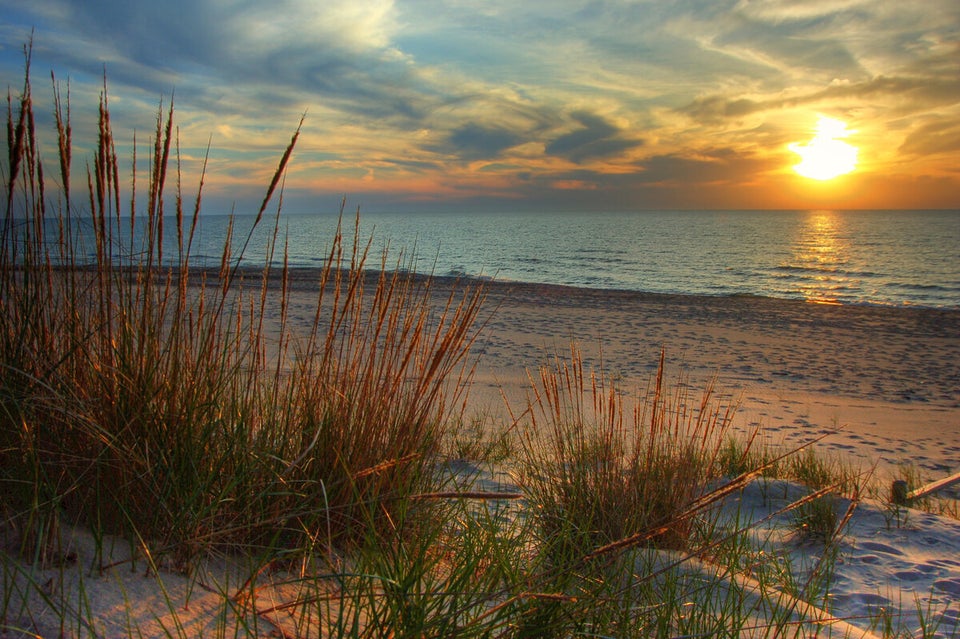
Written by Elizabeth Hendriks, Vice President, Freshwater
Conservation scientists are concerned about the lack of ice on the Great Lakes, which this winter is at an almost historic low.
About 50 per cent of the lakes' surface area usually ices over in winter on average. Last year was particularly cold, and average ice cover reached 88.8 per cent. The year before that it was 92.5 per cent, the second highest ever recorded. Right now, ice coverage is barely above 15 per cent on three of the Great Lakes (Huron, Erie and Michigan), while ice coverage on Superior and Ontario is barely above 5 per cent. If more ice doesn't develop in the next few weeks, 2016 risks breaking the record low of just 9.2 per cent average ice cover seen in the winter of 2001-02.
On the surface, the lack of ice makes shipping companies happy as their boats can keep operating, and they don't need expensive ice breaking ships. Ice anglers, on the other hand, are unhappily stuck on shore.
Under the surface, however, things look different: young fish may face harsher environments; shoreline habitats are in jeopardy; the risks of pollution are elevated; and algae problems could be worse than usual this summer as a result, leading to an increased number of beach closings.
WWF-Canada's Watershed Reports highlight threats facing the Great Lakes region from climate change and even more so from pollution. Warming and subsequent ice-free winters will potentially exacerbate these threats, which is why WWF-Canada is working to ensure that all waters in Canada are in good condition by 2025. Our conservation scientists want to make sure that the species that rely on the Great Lakes -- including humans -- won't be on thin ice in years to come.
Warmer lakes and warmer air temperatures suggest we can anticipate many more winters where lakes don't go through regular freeze-thaw cycles.
Winter is usually a time when less water is moving through rivers in Southern Ontario -- also known as the low flow period -- since precipitation accumulates as snow. In warm winters precipitation falls as rain or wet snow that melts quickly, increases river flow, which in turn can lead to river bank erosion and increased pollution. All of this impacts species such as minnows and hibernating turtles that are not accustomed to high flows in winter. Ice-free winters can also effect the reproductive success of important fish species such as Lake Trout and Lake Whitefish.
Even more importantly, without an accumulation of snow and ice to melt in the spring, rivers may heat up faster than normal and throw the delicate food web out of balance. Some fish species time their spawning to water temperatures to allow their young to hatch and be ready for increases in plankton, a major food source for juvenile fish. In normal, colder Canadian winters, ice forms along shorelines and protects fish eggs spawned in the fall from the strong wind and waves of early winter.
If these important events -- low flow and then melting snow -- don't happen, an entire year's worth of fish could be impacted.
This recent study of lake surface waters from York University showed that lakes around the world are warming much faster than expected due to climate change. Warmer lakes and warmer air temperatures suggest we can anticipate many more winters where lakes don't go through regular freeze-thaw cycles.
This is especially bad news for lakes where toxic algal blooms are a problem, such as the Great Lakes. A lack of ice cover in the winter can mean that the lake heats up faster in the spring, potentially increasing the magnitude of the toxic blooms, which are a threat to human and aquatic health. Lake Erie has seen an increase in the number of harmful algal blooms over the last several years and in 2011 recorded the largest toxic algal bloom ever, covering more than 5,000 square kilometers.
Follow HuffPost Canada Blogs on Facebook
ALSO ON HUFFPOST:
